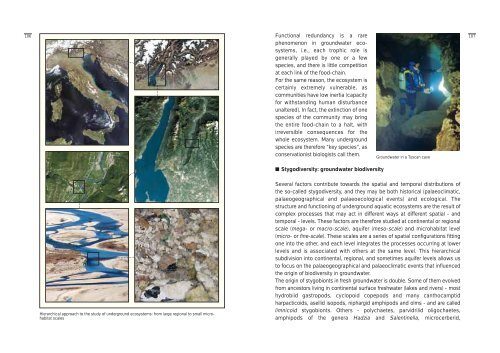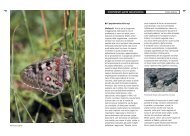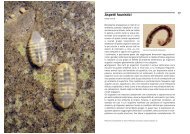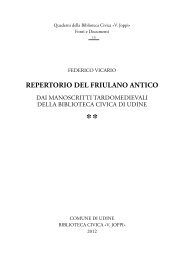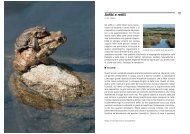Despite its inhospitable appearance and lack of any ... - Udine Cultura
Despite its inhospitable appearance and lack of any ... - Udine Cultura
Despite its inhospitable appearance and lack of any ... - Udine Cultura
Create successful ePaper yourself
Turn your PDF publications into a flip-book with our unique Google optimized e-Paper software.
106<br />
Hierarchical approach to the study <strong>of</strong> underground ecosystems: from large regional to small microhabitat<br />
scales<br />
Functional redundancy is a rare<br />
phenomenon in groundwater ecosystems,<br />
i.e., each trophic role is<br />
generally played by one or a few<br />
species, <strong>and</strong> there is little competition<br />
at each link <strong>of</strong> the food-chain.<br />
For the same reason, the ecosystem is<br />
certainly extremely vulnerable, as<br />
communities have low inertia (capacity<br />
for withst<strong>and</strong>ing human disturbance<br />
unaltered). In fact, the extinction <strong>of</strong> one<br />
species <strong>of</strong> the community may bring<br />
the entire food-chain to a halt, with<br />
irreversible consequences for the<br />
whole ecosystem. M<strong>any</strong> underground<br />
species are therefore “key species”, as<br />
conservationist biologists call them.<br />
■ Stygodiversity: groundwater biodiversity<br />
Groundwater in a Tuscan cave<br />
Several factors contribute towards the spatial <strong>and</strong> temporal distributions <strong>of</strong><br />
the so-called stygodiversity, <strong>and</strong> they may be both historical (palaeoclimatic,<br />
palaeogeographical <strong>and</strong> palaeoecological events) <strong>and</strong> ecological. The<br />
structure <strong>and</strong> functioning <strong>of</strong> underground aquatic ecosystems are the result <strong>of</strong><br />
complex processes that may act in different ways at different spatial - <strong>and</strong><br />
temporal - levels. These factors are therefore studied at continental or regional<br />
scale (mega- or macro-scale), aquifer (meso-scale) <strong>and</strong> microhabitat level<br />
(micro- or fine-scale). These scales are a series <strong>of</strong> spatial configurations fitting<br />
one into the other, <strong>and</strong> each level integrates the processes occurring at lower<br />
levels <strong>and</strong> is associated with others at the same level. This hierarchical<br />
subdivision into continental, regional, <strong>and</strong> sometimes aquifer levels allows us<br />
to focus on the palaeogeographical <strong>and</strong> palaeoclimatic events that influenced<br />
the origin <strong>of</strong> biodiversity in groundwater.<br />
The origin <strong>of</strong> stygobionts in fresh groundwater is double. Some <strong>of</strong> them evolved<br />
from ancestors living in continental surface freshwater (lakes <strong>and</strong> rivers) - most<br />
hydrobiid gastropods, cyclopoid copepods <strong>and</strong> m<strong>any</strong> canthocamptid<br />
harpacticoids, asellid isopods, niphargid amphipods <strong>and</strong> olms - <strong>and</strong> are called<br />
limnicoid stygobionts. Others - polychaetes, parvidrilid oligochaetes,<br />
amphipods <strong>of</strong> the genera Hadzia <strong>and</strong> Salentinella, microcerberid,<br />
107


